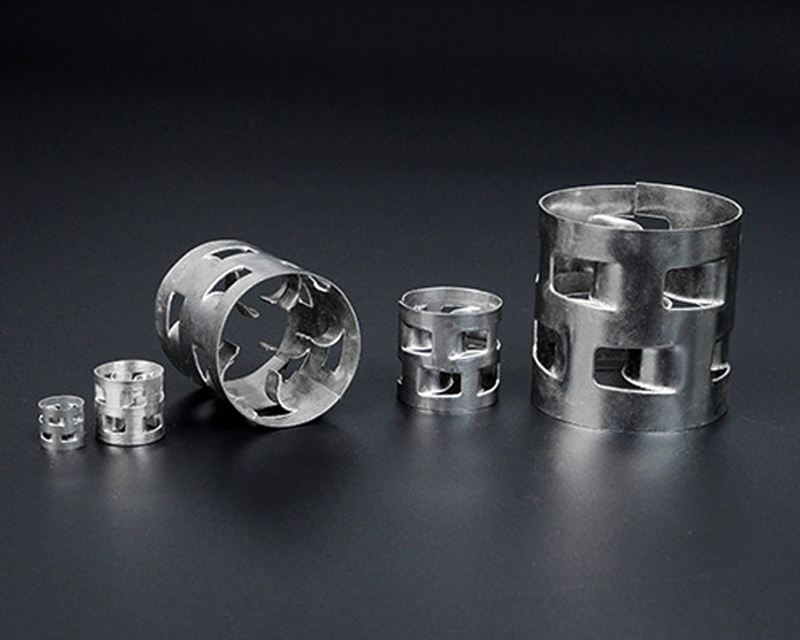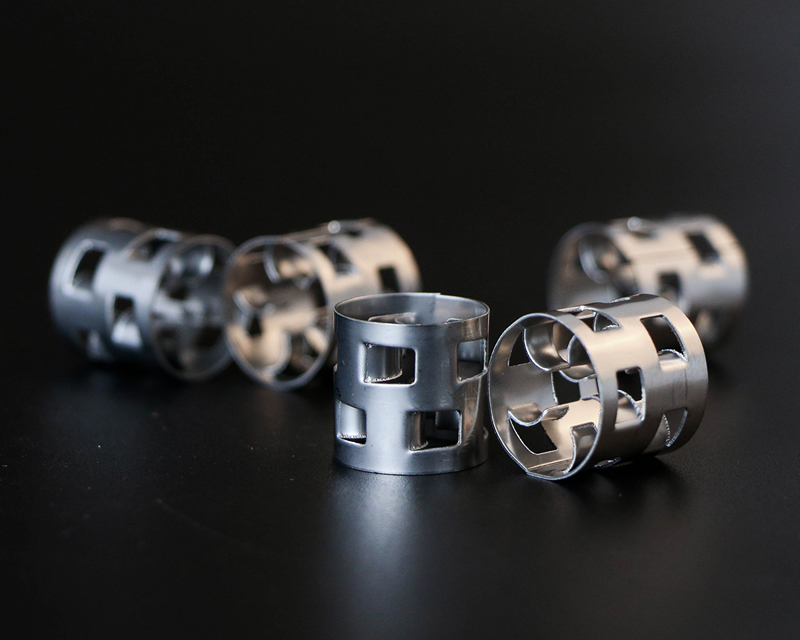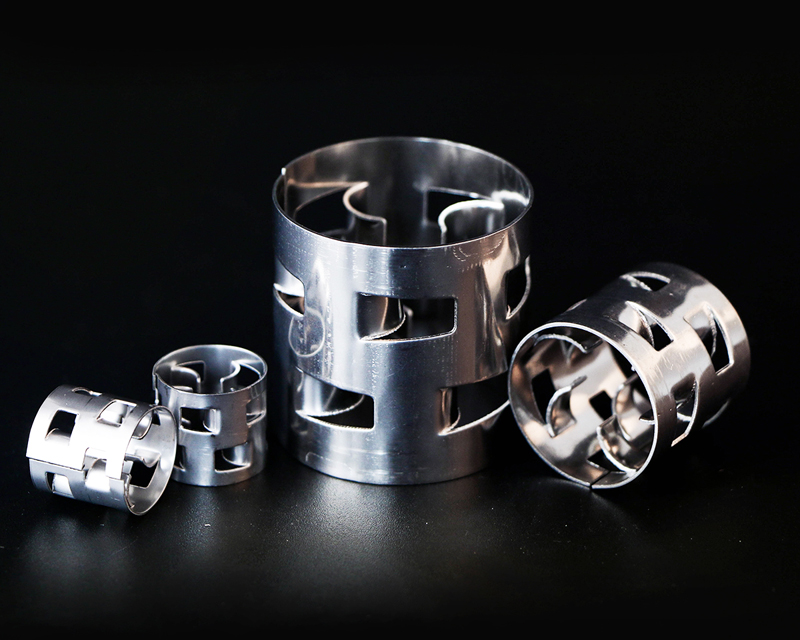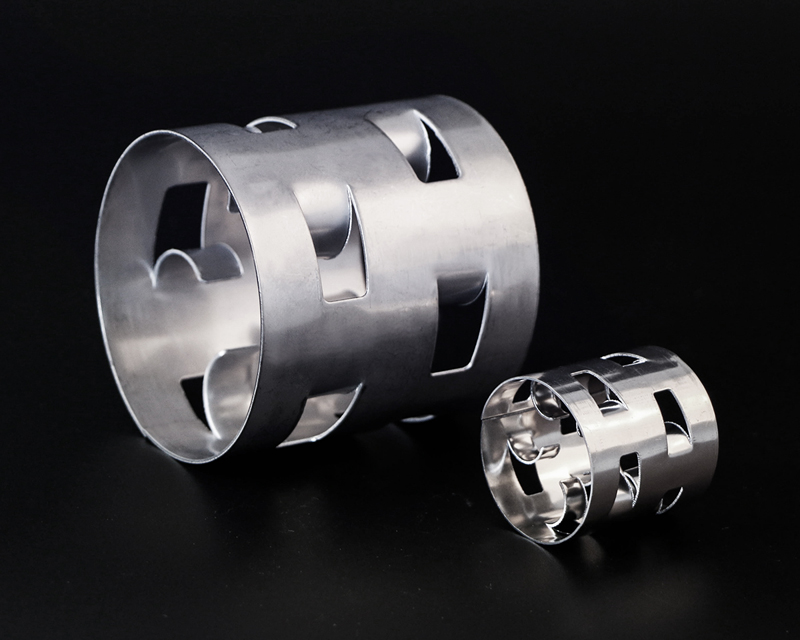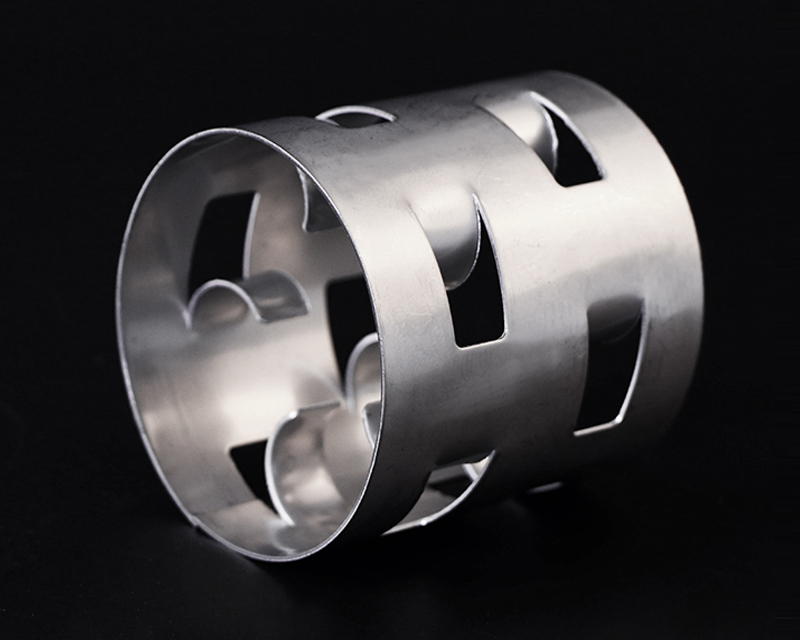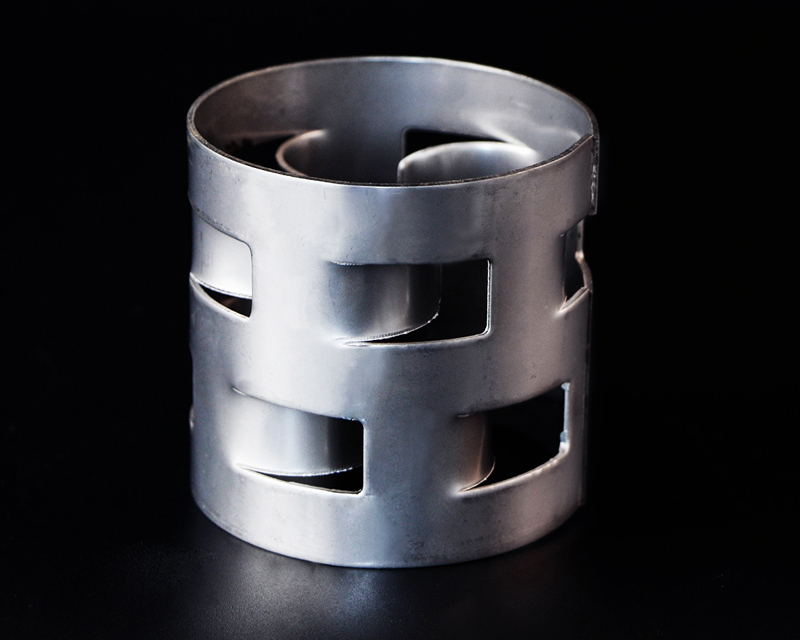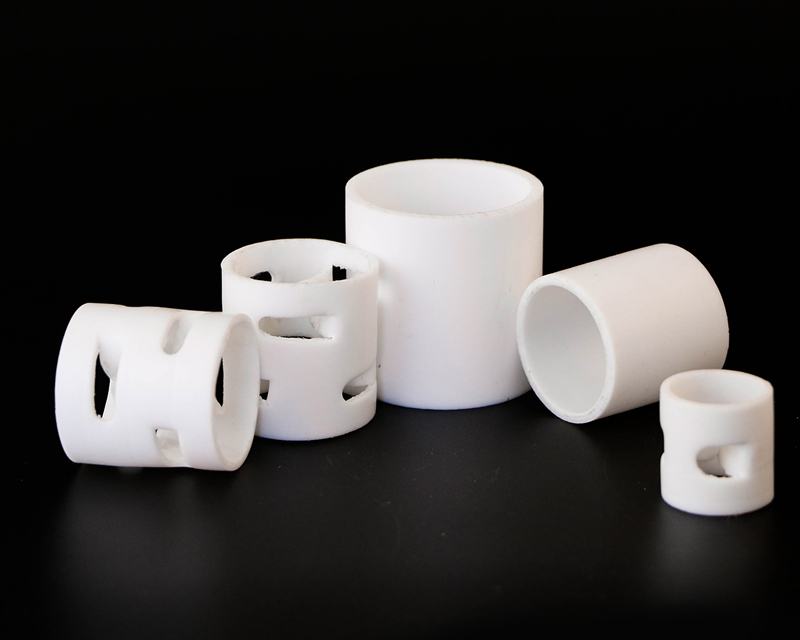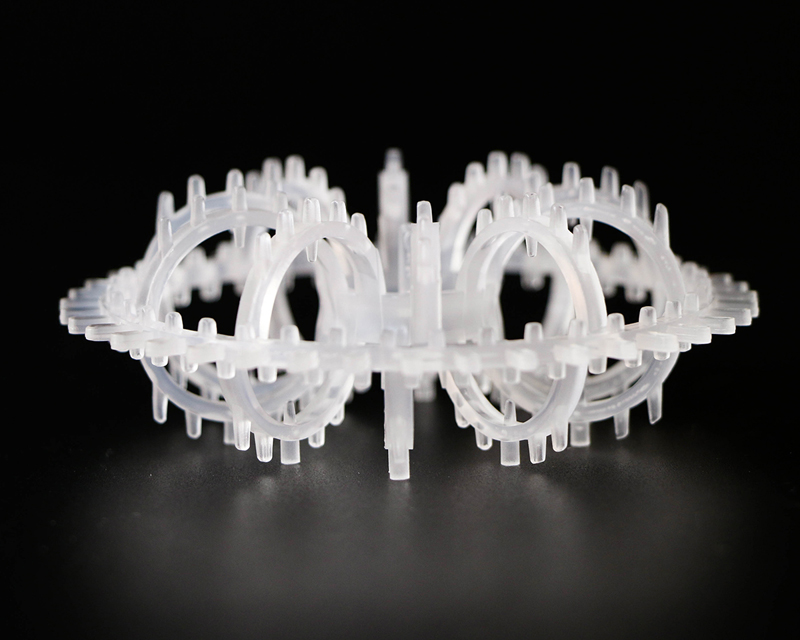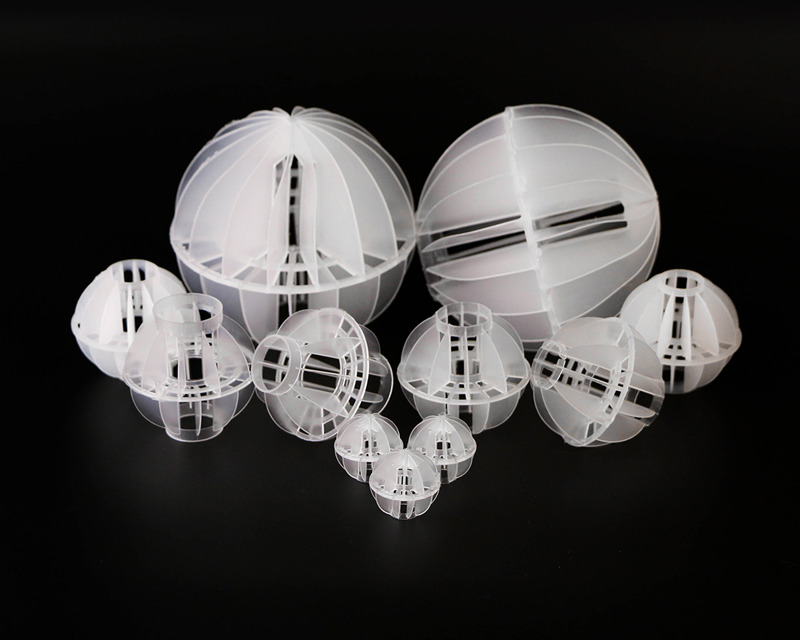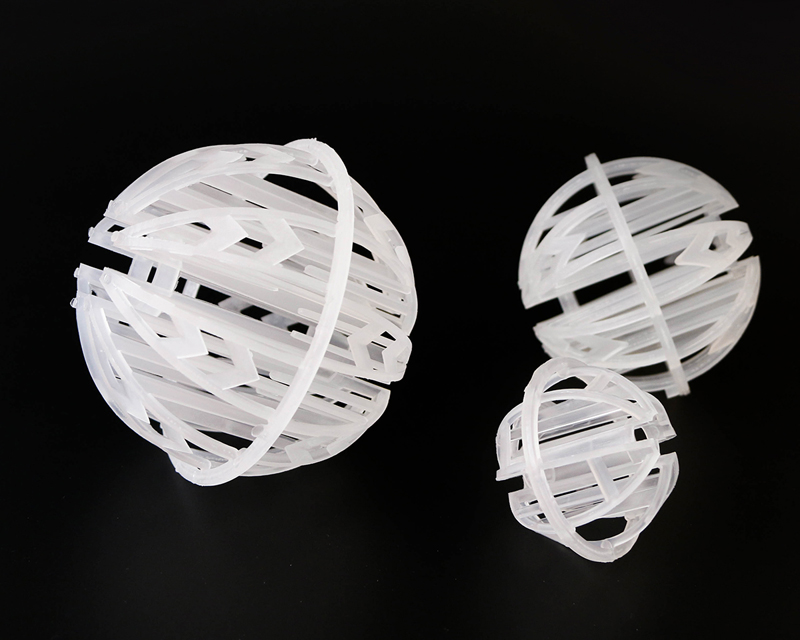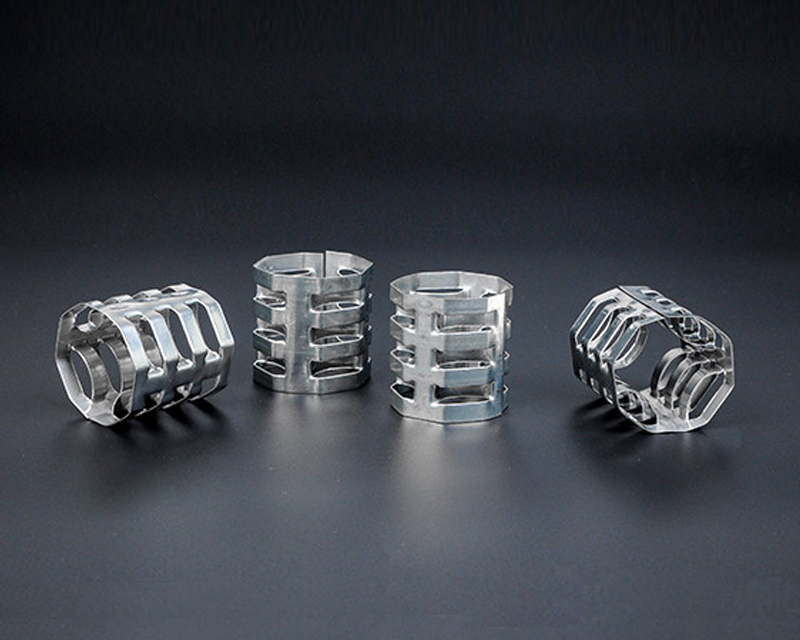Product overview:
The metal Pall ring packing is punched from a thin metal plate, and two rows of window holes with inner protruding tongues are opened on the ring wall. Each row of window holes has five tongues, each of which is bent into the ring and points to the center of the ring, and almost overlaps at the center. The positions of the upper and lower windows are staggered. Generally, the total area of the opening is about the entire ring. About 35% of the wall area, because the Pall ring packing has many windows on the ring wall, the gas and liquid in the tower can freely pass through the window. At present, the Pall ring packing is one of the main ring packings used.
Metal Pall ring packing was developed on the basis of Raschig ring packing by German BASF company in the 1940s. It is made of sheet metal punching and two rows of windows with inwardly extending tongues are opened on the ring wall. Holes, each row of windows has five tongues bent into the ring, pointing to the center of the ring, and almost overlapping at the center. The positions of the upper and lower windows are staggered. Generally, the total area of the opening is about 35% of the entire ring area. about. Since many windows are opened on the ring wall, the gas and liquid distribution and mass transfer performance in the packing layer are greatly improved compared with the Raschig ring.
There are many kinds of metal Pall ring materials, such as carbon steel, stainless steel 304, 304L, 410, 316, 316L, etc., to choose from.
Product Features:
● Pall ring packing has the characteristics of low pressure drop, large flux and high efficiency. Metal packing has lower pressure drop and higher high-quality efficiency than Pall rings of the same size, and the liquid distribution in the packing layer is good.
●Suitable for various separation, absorption and desorption equipment, atmospheric and vacuum equipment, synthetic ammonia decarburization, desulfurization system, ethyl benzene separation, isooctane/toluene separation, etc.
●The resistance is small, the flux is large, the operation flexibility is large, and the separation efficiency is high.
●Its processing capacity is much larger than that of the Raschig ring. If it is the same processing capacity, its pressure can be reduced to less than half at the same time its mass transfer efficiency can be increased by about 20%.
●Its production capacity is very large. Under normal circumstances, using Pall rings can save about 35% of the packing volume than using Raschig rings.
|
Inch/mm mm
|
Bulk weight Kg/m3
|
Number of piles per/m3
|
Specific surface area m2/m3
|
Porosity%
|
Dry packing factor m-
|
|
6*6*0.3
|
900
|
4000000
|
904
|
88.6
|
1307.4
|
|
10*10*0.3
|
480
|
768000
|
482
|
93.8
|
583.8
|
|
13*13*0.3
|
420
|
410000
|
415
|
4.8
|
489.2
|
|
16*16*0.3
|
348
|
201000
|
344
|
95.5
|
393.2
|
|
25*25*0.4
|
288
|
53500
|
212
|
96.2
|
229.8
|
|
25*25*0.5
|
367
|
53500
|
216
|
95
|
237.2
|
|
25*25*0.6
|
439
|
53500
|
219
|
94.2
|
244.1
|
|
38*38*0.4
|
193
|
15180
|
143
|
97.2
|
148.4
|
|
38*38*0.5
|
246
|
15180
|
145
|
96.7
|
151.7
|
|
38*38*0.6
|
328
|
15000
|
146
|
95.9
|
154.6
|
|
50*50*0.5
|
185
|
6500
|
106
|
97.5
|
128.5
|
|
50*50*0.8
|
315
|
6500
|
108
|
96.8
|
130.5
|
|
50*50*1.0
|
380
|
6500
|
132.5
|
96.0
|
134.0
|
|
76*76*1.0
|
265
|
1920
|
69
|
97.4
|
79.6
|
|
89*89*1.0
|
224
|
1220
|
61
|
97.1
|
66.2
|

 English
English Chinese
Chinese

